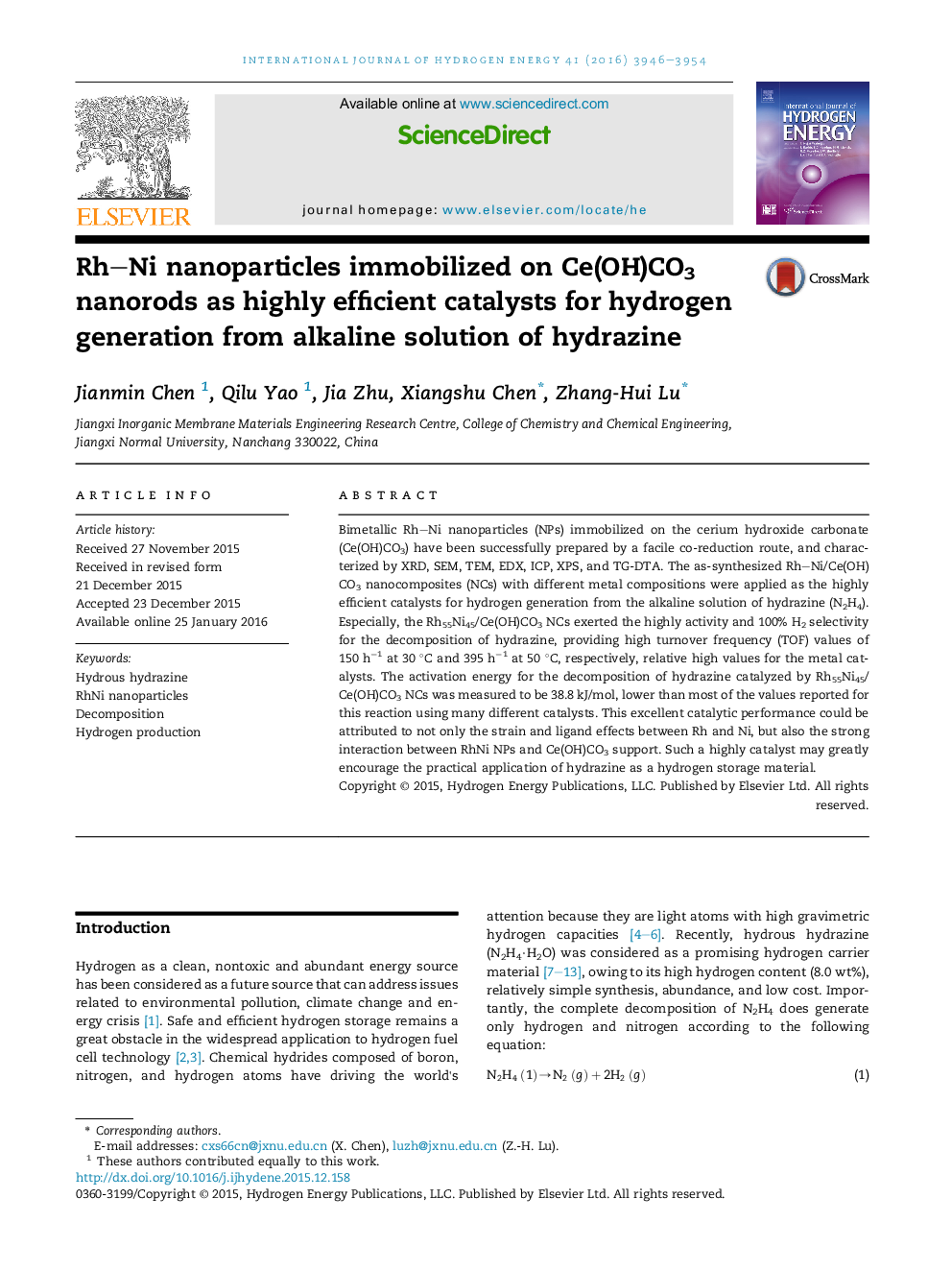| کد مقاله | کد نشریه | سال انتشار | مقاله انگلیسی | نسخه تمام متن |
|---|---|---|---|---|
| 1277924 | 1497419 | 2016 | 9 صفحه PDF | دانلود رایگان |

• Rh–Ni/Ce(OH)CO3 were synthesized by a facile co-reduction method.
• Rh55Ni45/Ce(OH)CO3 showed high activity and H2 selectivity for decomposition of hydrazine.
• A high TOF value of 150 h−1 at 30 °C was obtained.
• Activation energy of Rh55Ni45/Ce(OH)CO3 was measured to be 38.8 kJ/mol.
Bimetallic Rh–Ni nanoparticles (NPs) immobilized on the cerium hydroxide carbonate (Ce(OH)CO3) have been successfully prepared by a facile co-reduction route, and characterized by XRD, SEM, TEM, EDX, ICP, XPS, and TG-DTA. The as-synthesized Rh–Ni/Ce(OH)CO3 nanocomposites (NCs) with different metal compositions were applied as the highly efficient catalysts for hydrogen generation from the alkaline solution of hydrazine (N2H4). Especially, the Rh55Ni45/Ce(OH)CO3 NCs exerted the highly activity and 100% H2 selectivity for the decomposition of hydrazine, providing high turnover frequency (TOF) values of 150 h−1 at 30 °C and 395 h−1 at 50 °C, respectively, relative high values for the metal catalysts. The activation energy for the decomposition of hydrazine catalyzed by Rh55Ni45/Ce(OH)CO3 NCs was measured to be 38.8 kJ/mol, lower than most of the values reported for this reaction using many different catalysts. This excellent catalytic performance could be attributed to not only the strain and ligand effects between Rh and Ni, but also the strong interaction between RhNi NPs and Ce(OH)CO3 support. Such a highly catalyst may greatly encourage the practical application of hydrazine as a hydrogen storage material.
A facile and effective approach for one step co-reduction route fabrication of Rh55Ni45/Ce(OH)CO3 nanocomposites, which exhibited excellent catalytic activity for hydrogen generation from the decomposition of N2H4 at 30 °C.Figure optionsDownload as PowerPoint slide
Journal: International Journal of Hydrogen Energy - Volume 41, Issue 6, 19 February 2016, Pages 3946–3954